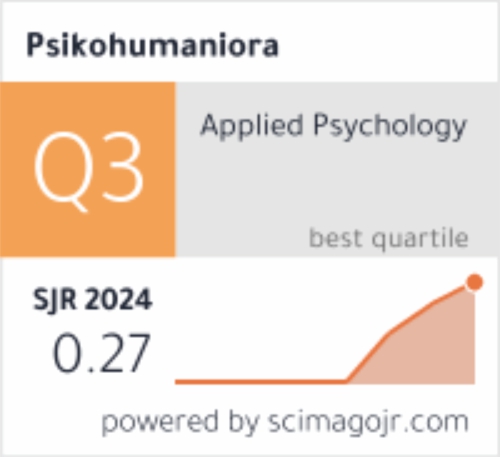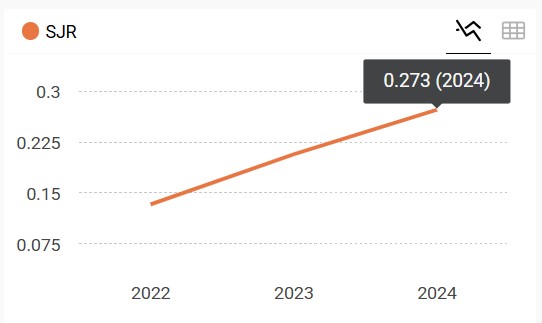Factors inhibiting the psychological recovery process of children in conflict with the law
DOI:
https://doi.org/10.21580/pjpp.v6i1.6578Keywords:
psychological recovery, children in conflict with the law, restorative justiceAbstract
Psychological assistance is crucial in recovering the psychological condition of children in conflict with the law. The City Government of Semarang, Indonesia has responded to this need with a school-based restorative justice program. This study aims to explore the factors that can hinder the psychological recovery process of children in conflict with the law during the implementation of the program. A qualitative approach was employed, based on case studies of three children in conflict with the law, with their significant others as participants. Case study data analysis techniques were employed, namely matching patterns, building explanations, finding model logic, and synthesizing cases. The results show that negative peer support, drug abuse, negative role models, emotional detachment, and negative stigma towards children in conflict with the law can be factors that hinder their psychological recovery process. The findings could provide the basis for practitioners in the preparation of psychological interventions that are relevant to the psychological recovery needs of children.Downloads
References
Abidin, Z. (2019). Rehabilitasi sosial anak berhadapan dengan hukum di lembaga Indonesia Safe House di Malang. Sosio Konsepsia, 8(2), 1–13. https://doi.org/10.33007/ska.v8i2.1463
Andresen, R., Oades, L., & Caputi, P. (2011). Psychological recovery beyond mental illness. Wiley-Blackwell.
Anthony, W. A., & Liberman, R. P. (1992). Principles and practice of psychiatric rehabilitation. In R. P. Liberman (Ed.), Handbook of Psychiatric Rehabilitation (pp. 1–29). MacMillan.
Azam, S. B. M. (2016). Amalan restoraktif dalam program perlindungan dan pemulihan remaja hamil luar nikah di Malaysia. The Malaysian Journal of Social Administration, 12(1), 100–135. https://doi.org/10.22452/mjsa.vol12no1.5
Chassin, L. (2008). Juvenile justice and substance use. The Future of Children, 18(2), 165–183. https://doi.org/10.1353/foc.0.0017
Creswell, J. W. (2015). Riset pendidikan: Perencanaan, pelaksanaan, dan evaluasi riset kualitatif & kuantitatif. Pustaka Pelajar.
Fox, B. H., Perez, N., Cass, E., Baglivio, M. T., & Epps, N. (2015). Trauma changes everything: Examining the relationship between adverse childhood experiences and serious, violent and chronic juvenile offenders. Child Abuse & Neglect, 46, 163–173. https://doi.org/10.1016/j.chiabu.2015.01.011
Gilman, A. B., Hill, K. G., & Hawkins, J. D. (2014). Long-term consequences of adolescent gang membership for adult functioning. American Journal of Public Health, 104(5), 938–945. https://doi.org/10.2105/AJPH.2013.301821
Gottfredson, M. R., & Hirschi, T. (1990). A general theory of crime. Stanford University Press.
Haviland, A. M., & Nagin, D. S. (2005). Causal inferences with group based trajectory models. Psychometrika, 70(3), 557–578. https://doi.org/10.1007/s11336-004-1261-y
Inzlicht, M., Tullett, A. M., & Gutsell, J. N. (2012). Stereotype threat spillover: The short-and long-term effects of coping with threats to social identity. In M. Inzlicht & T. Schmader (Eds.), Stereotype threat: Theory, process, and application. Oxford University Press.
Juneman, A. (2008). Yurisprudensi terapeutik: Peran integratif psikologi dalam proses hukum untuk melayani kesejahteraan pribadi (well-being) klien hukum. Jurnal Kajian Ilmiah Universitas Bhayangkara Jakarta Raya, 9(3), 908–922. https://doi.org/10.31234/osf.io/cfg4u
Kordi, K., & H, M. G. (2015). Durhaka kepada anak: Refleksi mengenai hak dan perlindungan anak. Pustaka Baru Press.
Krohn, M. D., Ward, J. T., Thornberry, T. P., Lizotte, A. J., & Chu, R. (2011). The cascading effects of adolescent gang involvement across the life course. Criminology, 49(4), 991–1028. https://doi.org/10.1111/j.1745-9125.2011.00250.x
Liberman, Robert Paul, Kopelowicz, A., Ventura, J., & Gutkind, D. (2002). Operational criteria and factors related to recovery from schizophrenia. International Review of Psychiatry, 14(4), 256–272. https://doi.org/10.1080/0954026021000016905
Link, B. G., Cullen, F. T., Struening, E., Shrout, P. E., & Dohrenwend, B. P. (1989). A modified labeling theory approach to mental disorders: An empirical assessment. American Sociological Review, 54(3), 400–423. https://doi.org/10.2307/2095613
Melde, C., & Esbensen, F.-A. (2014). The relative impact of gang status transitions. Journal of Research in Crime and Delinquency, 51(3), 349–376. https://doi.org/10.1177/0022427813507059
Miers, D. (2001). An international review of restorative justice. Home Office, Policing and Reducing Crime Unit.
Puspitawati, P. M., Adiyanti, M. G., & Minza, M. W. (2019). Pertimbangan logis guru terhadap Undang-Undang Republik Indonesia Nomor 11 Tahun 2012 dalam konteks pemulihan anak yang berkonflik dengan hukum. Universitas Gadjah Mada, Yogyakarta.
Pyrooz, D. C., Turanovic, J. J., Decker, S. H., & Wu, J. (2016). Taking stock of the relationship between gang membership and offending. Criminal Justice and Behavior, 43(3), 365–397. https://doi.org/10.1177/0093854815605528
Rashid, Y., Rashid, A., Warraich, M. A., Sabir, S. S., & Waseem, A. (2019). Case study method: A step-by-step guide for business researchers. International Journal of Qualitative Methods, 18, 160940691986242. https://doi.org/10.1177/1609406919862424
Roche, D. (2003). Accountability in restorative justice. Oxford University Press.
Sacks, V., Murphey, D., & Moore, K. (2014). Adverse childhood experiences: National and state level prevalence. In Research Brief - Child Trends. https://doi.org/10.13140/2.1.1193.8087
Thornberry, T. P., Kearley, B., Gottfredson, D. C., Slothower, M. P., Devlin, D. N., & Fader, J. J. (2018). Reducing crime among youth at risk for gang involvement. Criminology & Public Policy, 17(4), 953–989. https://doi.org/10.1111/1745-9133.12395
Underwood, L., & Washington, A. (2016). Mental illness and juvenile offenders. International Journal of Environmental Research and Public Health, 13(2), 228. https://doi.org/10.3390/ijerph13020228
Van Ness, D. W., & Strong, K. H. (2015). Restoring justice: An introduction to restorative justice. Routledge.
Weaver, C. M., Borkowski, J. G., & Whitman, T. L. (2008). Violence breeds violence: Childhood exposure and adolescent conduct problems. Journal of Community Psychology, 36(1), 96–112. https://doi.org/10.1002/jcop.20219
Wolff, K. T., Baglivio, M. T., & Piquero, A. R. (2017). The relationship between adverse childhood experiences and recidivism in a sample of juvenile offenders in Community-Based Treatment. International Journal of Offender Therapy and Comparative Criminology, 61(11), 1210–1242. https://doi.org/10.1177/0306624X15613992
Wong, D. S. W., Cheng, C. H. K., Ngan, R. M. H., & Ma, S. K. (2011). Program effectiveness of a restorative whole-school approach for tackling school bullying in Hong Kong. International Journal of Offender Therapy and Comparative Criminology, 55(6), 846–862. https://doi.org/10.1177/0306624X10374638
Yin, R. K. (2015). Case study research: Design and methods (5th ed.). Sage.
Young, D. W., Dembo, R., & Henderson, C. E. (2007). A national survey of substance abuse treatment for juvenile offenders. Journal of Substance Abuse Treatment, 32(3), 255–266. https://doi.org/10.1016/j.jsat.2006.12.018
Zehr, H. (2014). The little book of restorative justice. Good Books.
Downloads
Published
How to Cite
Issue
Section
License
The copyright of the accepted article shall be assigned to the publisher of the journal. The intended copyright includes the right to publish the article in various forms (including reprints). The journal maintains the publishing rights to published articles.
In line with the license, authors and any users (readers and other researchers) are allowed to share and adapt the material only for non-commercial purposes. In addition, the material must be given appropriate credit, provided with a link to the license, and indicated if changes were made. If authors remix, transform, or build upon the material, authors must distribute their contributions under the same license as the original.



